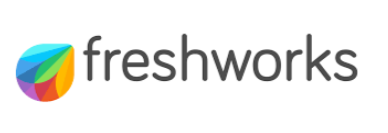
Revolutionizing businesses with innovative IT solutions.
Innovating to Shape the Future of Technology through Creative Thinking and Cutting-Edge Solutions
Our ServicesTransforming Businesses with Cutting-Edge IT Solutions
At Bitscape, we specialize in providing innovative and transformative technology solutions to businesses. With our expertise and cutting-edge solutions, we help our clients optimize their operations, enhance productivity, and drive growth. Whether it's cloud computing, cybersecurity, or digital transformation, we have the knowledge and experience to deliver exceptional results.
Comprehensive IT Services for Your Business
We offer a wide range of IT services to help businesses optimize their operations and achieve their goals. From network security to cloud computing, our expert team is here to support you every step of the way.

Cyber-Security
Protect your valuable data and secure your network against cyber threats with our robust security and identity solutions.

Datacenter Services
Manage, upgrade and optimize your datacenter infrastructure by leveraging our vast experience and skills.

IT Asset Management
Gain meaningful insight and visibility, and achieve compliance within your IT environment

Digital Business Solutions
Enable your team reach maximum potential with our large rage of business focused solutions
Our results in numbers
success in managing enterprise backups systems and reducing downtime
exposure savings from optimizing licensing costs for our clients over the past 5 years
Users actively supported through our professional IT support managed services
increase in customer satisfaction with our tailored customer experience solutions
increase SLA compliance and response times with our helpdesk solutions
Our Strategic Partnerships












Satisfied Clients
















Build next-generation security operations powered by the cloud and AI
Modernize your security operations center (SOC) with our security solution offerings. Uncover sophisticated threats and respond decisively with an intelligent, comprehensive security information and event management (SIEM) solution for proactive threat detection, investigation, and response. Eliminate security infrastructure setup and maintenance, and elastically scale to meet your security needs—while reducing costs by as much as 48 percent compared to legacy SIEM solutions.
Collect data at cloud scale—across all users, devices, applications, and infrastructure, both on-premises and in multiple clouds
Detect previously uncovered threats and minimize false positives using analytics and unparalleled threat intelligence
Investigate threats with AI and hunt suspicious activities at scale, tapping into decades of cybersecurity experience
Respond to incidents rapidly with built-in orchestration and automation of common tasks
Accelerate IT operations, enhance app performance, and minimize cloud costs
Provide comprehensive data with rich context on your Cloud environments, empowering all your teams to collaborate and solve issues faster.


How resilient is your Information Governance Infrastructure
Our comprehensive Information Governance solutions ensure compliance, enhance data security, and optimize information workflows. Explore a seamless blend of policies, processes, and technologies tailored to meet your unique needs, enabling you to navigate the complexities of information management with confidence. Unlock the full potential of your data with a backup solution you can trust.


Customer service, IT, and CRM software that’s powerful yet easy to use. Now supercharged with generative AI.
Ditch the complex interfaces and say hello to a CRM that's as powerful as it is intuitive. Our software is now supercharged with generative AI, taking automation to the next level. Imagine streamlining workflows, generating personalized outreach content, and predicting customer needs – all within a user-friendly platform that keeps your team happy and productive.
Get in Touch
For detailed inquiries, please use the contact details here. We will get back to you shortly.
.png)